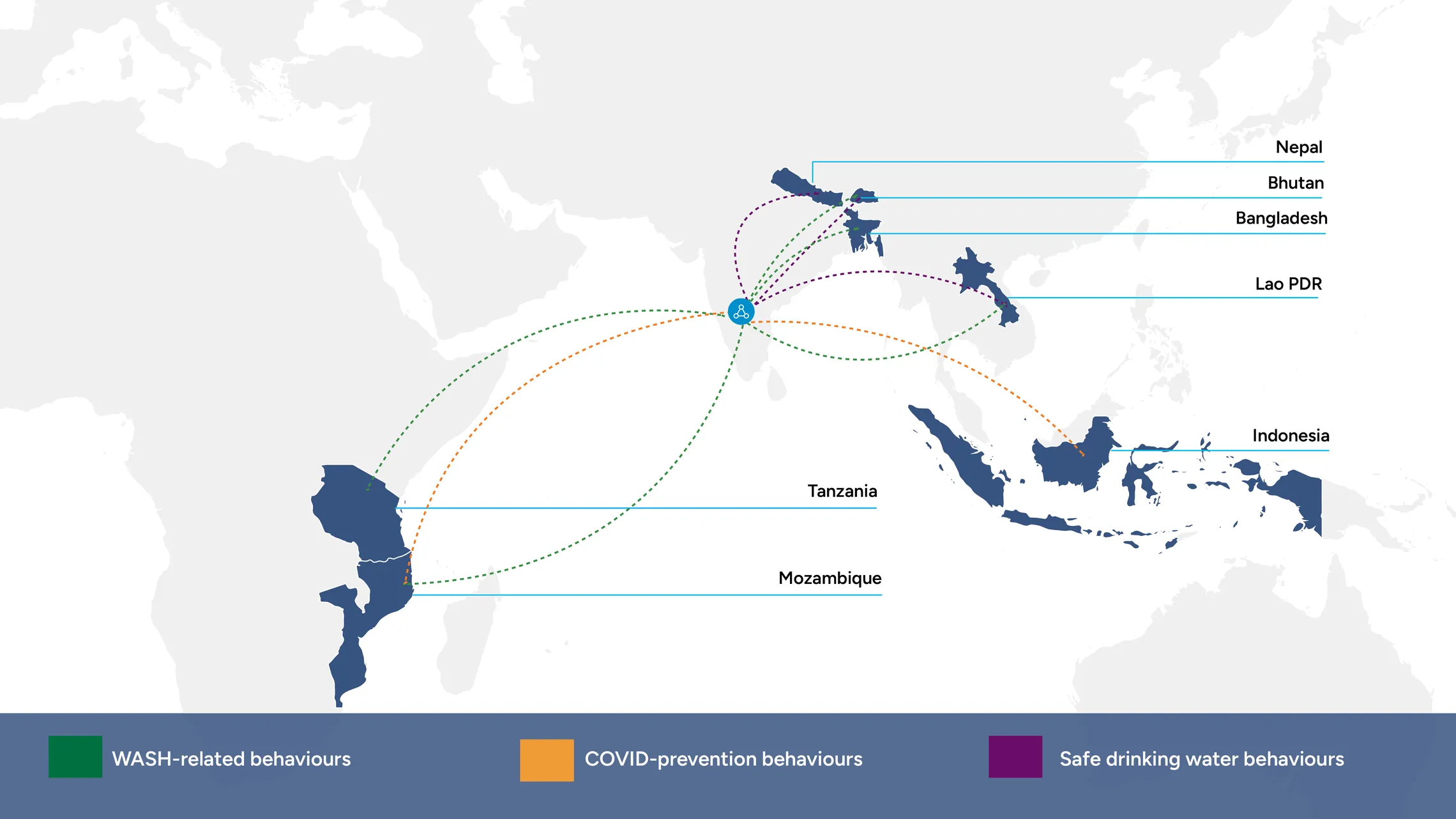Behaviour change hub partnership
Bangladesh,Ethiopia,Indonesia,Lao PDR,Mozambique,Nepal,Tanzania,
ongoing

A hub partnership between SNV and Upward Spiral to help bridge the gap between the science and practice of behavioural change programming.
While the science of behaviour change and its design have improved significantly over the last two decades, development practitioners have yet to fully exploit learning opportunities and practice. This gap in learning can lead to resource inefficiencies, lost time, and opportunities to accelerate social change and progress safe hygiene outcomes.
Started in 2020, the SNV-Upward Spiral collaboration adopts the London School of Hygiene and Tropical Medicine’s (LSHTM) five-step behaviour-centred design (BCD) approach of Assess, Build, Create, Deliver, and Evaluate. The partnership has set up an expert central support (hub) that assists diverse teams (spokes) apply LSHTM’s BCD approach at scale.
What is meant by a behaviour change hub?
The behaviour change hub offers expert central support (hub) to diverse organisational teams (spokes) working on behaviour challenges. Guided by the central support and a common framework, teams undergo a structured cycle of intervention design, implementation, and evaluation.
Notable achievements
What are the hub’s benefits?
The partnership model contributes to the following:
Improved effectiveness: A common approach rooted in behaviour science (behaviour-centred design) but informed by local knowledge and expertise can help design robust interventions.
Optimised resources: Central support increases efficiency and collective learning and reduces duplication of efforts. When teams work on the same behaviours in lock-step, such as handwashing with soap, safe water or waste management, greater efficiency is achieved as many tools, such as research guides and design briefs, can be adapted in different contexts.
Strengthened organisational capacity: Learning by doing, at the different stages of the process, takes the best behaviour change theory and makes it practical and relevant as it is applied to each context. Besides, working with peers who speak a common language and follow the same design process makes it easier for teams to share and learn.
Reduced carbon footprint: Strong online support and facilitation significantly reduce the need for international travel.
Learn more about the hub
The hub approach may be applied wherever common behaviour change challenges are shared across multiple countries and contexts. For more information, contact Upward Spiral's Balaji Gopalan or Nipa Desai.
To learn more about SNV’s hub partnership with Upward Spiral and SNV country-specific experiences with the team, contact Gabrielle Halcrow.



